#honored ancestors
Explore tagged Tumblr posts
Text


Shiver - Junji Ito Selected Stories ("Honored Ancestors") // Junji Ito
401 notes
·
View notes
Text

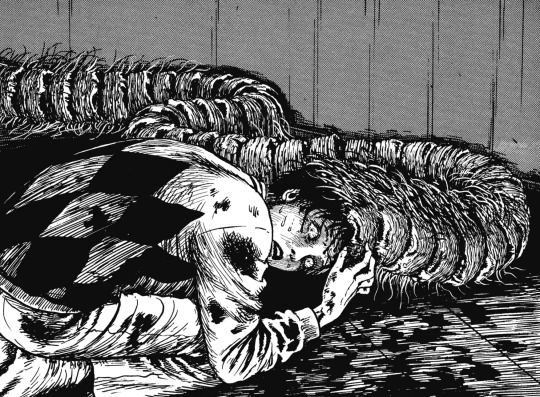
Shiver - Honored Ancestors | Junji Ito
29 notes
·
View notes
Text
Heads up! There is going to be a very long and detailed post about making sausages dropping in a few hours.
It's got a big red content warning and a readmore, so nothing is going to get gruesomely dropped on you, but make sure you add "butchery" or "cw butchery" to your tag filters to be extra safe if the idea of processing animal carcasses is upsetting to you!
It also has an image of sausage casings before they're scraped. I tried to whack the post with as many CWs as I can think of but I'd recommend "cw meat" or "cw organs" if you need them.
#I also kinda started infodumping about sausages in general#It's a lot more of a food post than a lore post#And that's because 1. I'm hungry and 2. I want to make a whole official warrior bites entry on clan sausages#Delving into how the sausages tend to be different between Clans because of their environments and preferences#The person who sent the ask seemed to be requesting technical info#So technical info they GOT#Funfact about me. One of my ancestors sold hot dogs for a living.#You all jest about silly American in the hamburger mine working hard for 1 rock and roll disk.#But I am from proud lineage of hotdogslingers. I have no need of rock and roll disk#I hot dog out of pride. For honor. A lone ranger.#''Gee Bones why do you like food so much'' my blood is hot dog water#Also I am not squeamish at all. Like. I'm chronically unsqueamish when it comes to meat and overestimate the comfort of other people#SO I try to make up for it with ample warnings like this#Since I got some new followers who may not be used to the Regularly Scheduled Strange Topics or how I do stuff.
134 notes
·
View notes
Text
youtube
I'm so obsessed with this video... Dan has the edgy teen genes...
#dan and phil#dnp#phan#daniel howell#amazingphil#dan howell#danisnotonfire#phil lester#Youtube#also thinking about his ketu first house#ketu first house often means that you are here to somehow honor your ancestors#and Dan's ancestors wanted him to be a gay emo boy
68 notes
·
View notes
Text

respectfully I need to climb him like a rope ladder and do him so good we both ascend into the clouds and never recover
#forever in a state of need for him that gets my feminist card revoked#i’m so HE IS JUST SO#he is EVERYTHING to me#the look on his face here is everything i dream of#so tender and approachable and vulnerable#yet with that inner strength that drives him and gives him such character#i feel like russell crowe poured every bit of his soul into maximus#there’s something so deeply human about him#something so deeply good and noble beyond the mere appearance of it#he’s a man who has fears and concerns and tendencies and blind spots and flaws#but also so motivated to do what’s right that all those other things are nearly forgotten#he loves his family his emperor his soldiers his home his ancestors and his honor#and he lives in a way so that he won’t disgrace any of them#and that constantly brings him into the spotlight because such a good man is so rare#i just!!! think he’s the best guy ever!#his face inspires me to write entire books of romantic poetry#i will write an epic of you my love#i will immortalize your goodness and strength#if he fixed this gaze on me i would be a puddle on the floor#that’s it jane is dead from an overload of handsomeness#obsessed with those big clear blue-green eyes and those little forehead crinkles and those wide shoulders#the face of a man who needs to be KISSED#and snuggled and caressed and loved on#i will!! i will love him if no one else will!#i will love him long after both our names are forgotten!#he’s so beloved by me he’s SO dear and precious to me#gladiator#maximus decimus meridius#gladiator 2000#russell crowe
34 notes
·
View notes
Text

#thevirginwitch#witchcraft#witch#witchblr#witchy#pagan#ancestor work#ancestors#ancestor veneration#veneration#honoring ancestors
21 notes
·
View notes
Text
Giratina's Temple and the Celestica Ruins
aka Giratina/platinum clan theory is back (also sorry for using mspaint lmao)
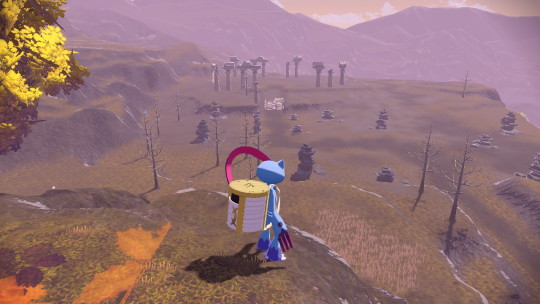
So we all know about the Shrouded Ruins, yeah?
(This is the only spoiler warning for Pokemon Legends: Arceus you're gonna get)
Spooky. Ever-cloaked in mists and mystery, surrounded by black-stoned cairns like graves and home to the giant Odd Keystone that once (?) housed 108 souls. Very ghost-centric.
Well what if I told you it was a temple?
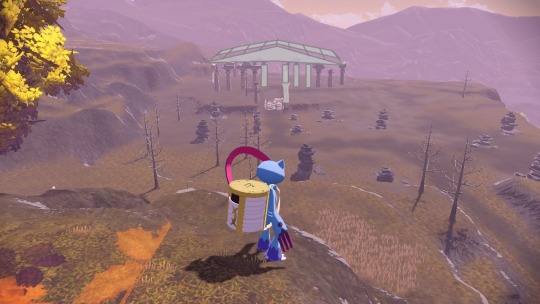
Greco-roman temples (and, problematic or otherwise the celestica are absolutely greco-roman coded) are constructed relatively uniformly, with an outer later of columns holding up the roof and an inner layer holding up an internal structure, providing additional support, ect.
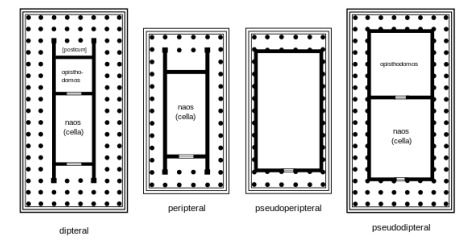
We have a perfect in-game model to project from, too, in the Temple of Sinnoh (pre-explosion). You can see that some of the smaller columns are sometimes decorative - likely they held up torches or, in the case of the two nearest the 'altar,' offerings

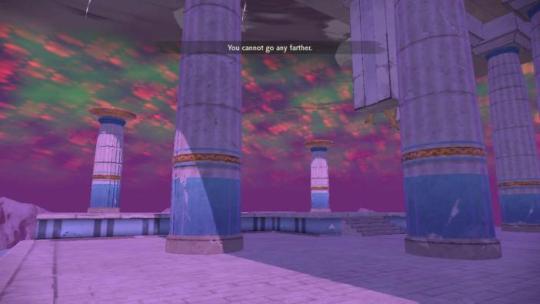
So knowing that style and having the remaining structures we do see in-game, we can approximate a lay out of what the building may have looked like.
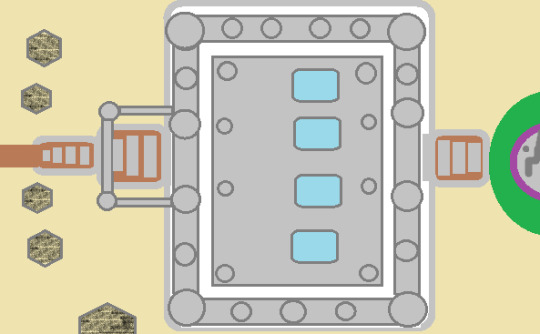

What makes this a temple, however, is more open to interpretation. My evidence to support that it is is actually the blue-tinged pedestals seen within the outline of the building - the place(s) of honor in any temple. Irl, the inner structure - the cella - was often fully-walled in, though sometimes this was constructed via wood and other materials that don't withstand time.

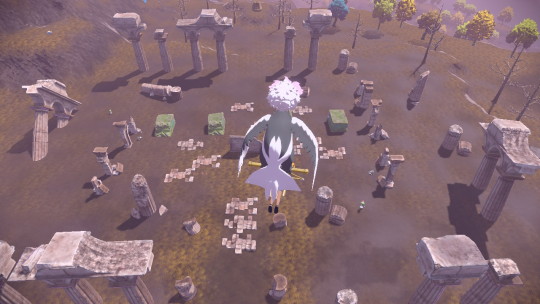
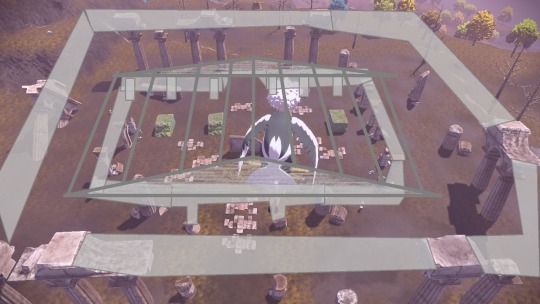
Now, ENORMOUS shout-out to pokemaniacchris and the incredible Crimson Mirelands Archeological Survey Project for a really detailed, in-character breakdown of the ruins structures throughout the mirelands. I can only assume the 'surveyors' hadn't reached Mt. Coronet yet in their explorations.
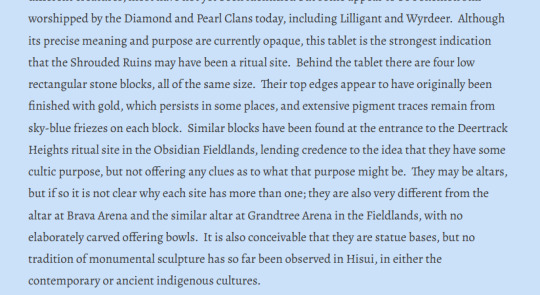

Pedestals like these (at least superficially similar) are found beneath dozens of statues around Mt. Coronet, including beneath Giratina, Palkia and Dialga in the Sacred Plaza area. Now, I know I'm supposed to be claiming that this is a temple to Giratina, but if we work on the assumption that the four pedestals corollate with Giratina, Palkia, Dialga, and Arceus, a new conclusion can, perhaps, be drawn:
That whoever built this temple saw all four of them on the same 'level' of power or -- and this is my hc taking over -- if the statues were placed in a certain orientation (see below) that they saw Arceus and Giratina on equal footing, with Dialga and Palkia one rank below.
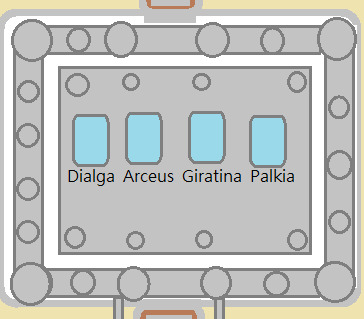
And there is, imo, more evidence to support this disruption of the 'creation trio' into two pairs on equal footing, found in the Celestica Ruins! So, among the structures there are two notable, circular buildings that the Greeks also utilized, called tholoi (plural). Irl, tholoi were a mix of secular-use and small-scale temples, and seeing as these two are small (maybe 10ft across inside?) I would maintain the claim that they're small temples.
And they align/mirror each other just as the statues of Palkia and Dialga do.

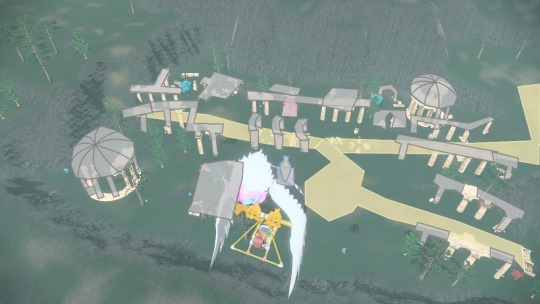
This part becomes pure conjecture, but I like to think the smaller structures in the ruins might be other small-scale temples for the various mythicals, honoring each much as the Greeks honored a pantheon.
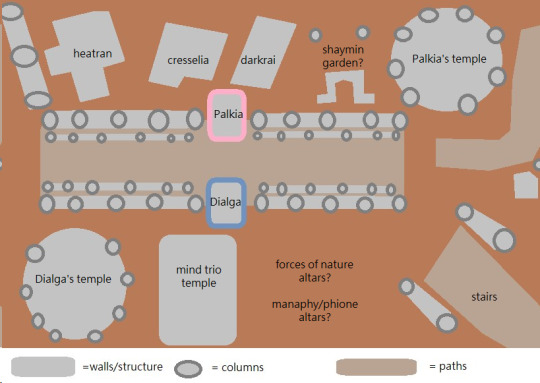
Lastly, the CMASP describes the "Gapejaw Bog Complex" as being potentially an entire agora all its own and I can't agree more. Such evidence would support the idea of there being two groups of Celestica (Note: Not the Clans.)
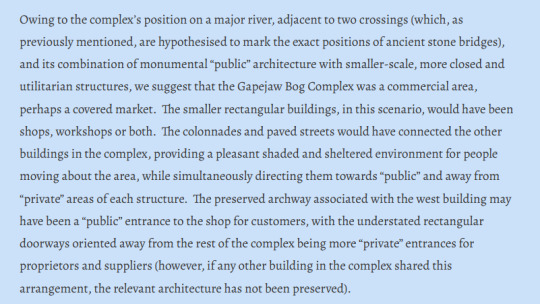
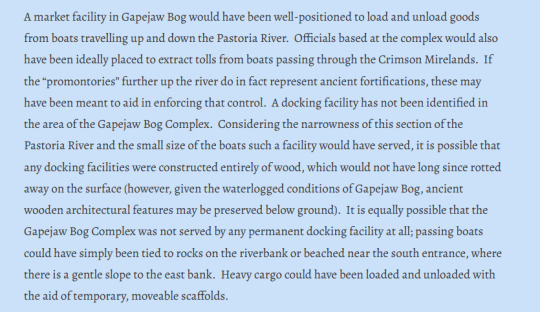
I actually found myself wondering if the mirelands weren't always quite so swampy, and instead flooded at some point in the past with the depressions around Gapejaw - left by housing foundations - filled in with swamp water.
At the end of the day, I think there's a lot of evidence that the Celestica revered Giratina as well as Arceus, Dialga and Palkia - at least early on. Something happened to cause this schism, and the Old Verses/Plate inscriptions point to an outburst of rage from Giratina -- though, in "pick a god (and pray)" I actually argue it was mispercieved on the part of the Celestica and this misperception is what caused Arceus to despair and withdraw.
Open to discussion!! fellow nerds please interact!!
#pla#pokemon legends arceus#celestica#celestica people#pokemon lore#giratina#arceus#volo#i also think there's a correlation between the ancient hero story's bolts of rage and alphas/hisuian pokemon aggression#specifically my internal timeline is that the schism predates everything purely on the secular/human level#arceus then empowered the noble pokemons' ancestors and fought the hero and believed humans were worthy of his blessing until the celestica#blamed giratina for the rage lightning and shattered the statue and maybe even drove the gira sect out#this dismayed arceus and it withdrew leaving the rage to fade but still linger and make hisui inhospitable#the celestica left (of their own volition imo) to seek out arceus and other knowledge and the clans came after#the clans saw only two statues (palkia and dialga) and picked sides but still upheld the tradition honoring the nobles#i imagine cogita being direct celestica (immortal or otherwise) and volo being gira clan descended or otherwise descended from the diaspora#the celestica then went to sinjoh/johto and so on and so forth#long post#reference
351 notes
·
View notes
Text

Eh close enough
(Like or reblog if you wanna use!)
#“oh me oh my i can’t control my magic and my powerful ancestor/ relative hates me:( “#now where have i heard it before#meme#my meme#maya y los tres#maya and the three#mat3#rico the rooster wizard#dnd film#dnd honor among thieves#simon aumar
20 notes
·
View notes
Text


#inuyasha#inukag#inuyasha gifs#anime cap#Inuyasha is my favorite noodle#Kagome likes the balls#They are idiots your honor#girl you better start speaking proper japanese or i'm gunna smack you so hard your honorable ancestors will feel dishonored#i have no idea what i'm doing#i should be writing#anime food
23 notes
·
View notes
Note
Will you be covering the Coronation?
You mean Princess Diana's Ex Husband's 'Compensating for Something' Ceremony?
No.
(Look, after seeing him & Camilla laugh during a throat singing performance, I lost any respect that I had for him (not that there was much to begin with))
#i will be pulling a joe biden and honoring my ancestors by not giving a fuck#while we're here good on harry & meghan for getting the fuck out of there#anyway give the jewels back to their original countries and sell the rest for reparations#asks and such
346 notes
·
View notes
Text
Mawkin children undergo several maturity rites before they're granted full tribal citizenship. The first occurs around eight years old, involving a basic academic evaluation and the child's choice between a physical fitness test or a dream-walk.
The evals are simple: how much has the child learned, what do they know, where can we supplement their education, etc. How can we stimulate their curiosity and foster a lifelong love of learning? Have they displayed any skills or passion for any particular subject? How can we encourage their hobbies and interests? Those are the kinds of questions the adults involved in carrying out the evaluation are asking themselves.
The evaluations help parents figure out (or reaffirm what they already know) ways to engage their childrens' interests in a fun or productive way, and how to help their child along the path to success, academic or otherwise. Every child is different: they have their own needs, and while 8 years old isn't old enough for anyone to ascertain exactly what they wanna be when they grow up, the evaluation is a good starting point for the rest of their academic track until their next formative rites.
The next part of the rites is a branching path. The fitness test is typically favored by more outdoorsy or athletic types, as well as children who are afraid of specters or arent very interested in the old ways. That's fine: old people stuff can be boring! The priests go on and on about the ancestors during holidays, but you're eight years-old and you've never seen the ancestors show up before, so big whoop. You've got toys to play and things to learn.
Another general assumption is that children who are likely to grow into steadfast warriors or athletes may pick the fitness test enthusiastically and without thinking about it, but again, this is an evaluation, and the kids are like, eight. Nothing is set in stone. Eight year olds also typically love playing outside.
A number of kids, hearing about all the cool things their elders know and are capable of, or just being curious about what their ancestors might have to teach them, opt for the dream-walk.
The dream-walk involves exposure to psychoactive fumes, but is nonetheless completely safe: the kid is monitored and made as comfortable as possible.
The dream-walk is overseen by priests and doctors. The burners are lit and the trial-goer falls asleep, entering a state similar to lucid dreaming.
Everyone's experience is different. Some kids have profound surreal experiences: others spend the entire time sitting at a table with a long-dead ancestor having a meal. Some kids are shown events from the past by an old ghost: some even experience said event from the perspective of someone who was there when it happened.
For others, the dream is of an old-fashioned hunt, typically guided by a departed grandparent or neighbor. It's not unusual for Mawkin kids to have experienced the act of hunting for food or sport by this point in their lives: many who hunt take their babies out with them on their backs. The quarry during the dream-walk, however, is typically more than your mundane game beast.
Tribal scholars and doctors of psychology have posited that the dream walk largely reflects the experiences of those involved. Formative memories and strong feelings, they believe, greatly affect the appearance of conjured apparitions in the dream. If a kid is fighting any demons at eight years old or harbor any powerful fears, they may very well be forced to face them head-on during this trial.
Therein lies the value of the dream-walk: it's not just a curiosity to get the kids to engage with cultural practices of yore, it has utility in teaching children valuable lessons through experience without actually making them fight the six-eyed serpent of a hundred and seventeen mouths. And they're usually not facing it alone: the ancestors quite literally walk with plenty of kids during these trials.
There are some truths a given child must face alone, and plenty do. But when they wake, they will find themselves among familiar company, the sweet smell of wood smoke permeating the air and a feast awaiting back home to celebrate their first milestone towards becoming an adult.
Some kids don't fight any major bosses or experience the heat death of the universe through the eyes of a slug, instead deriving value from the dream-walk in the form of sensory-guided introspection. The lesson they learn may not even be apparent to them until six years down the line. It doesn't have to be deep: it can just be an experience that gives then a new perspective on the world.
The senses are heightened supremely during the dream-walk, allowing the dreamer to experience the world in a whole new way. Tasting color, feeling the vibration of every sound beneath one's skin, perceiving the shape of every smell. Even if the kid walks away thinking "huh, I've never experienced the world that way before", the trial will have been a success. In the very least, a child should come out of that dark room with a unique memory for them to examine later on.
Several minor rituals and evaluations occur around twelve and fifteen years, but the foremost citizenship rites occur around seventeen, when an individual's stomach is strong enough to handle sap wine in greater quantities without suffering catastrophic liver failure. The dream-walk is a requirement this time around, as well as a combat test. The combat test is the actual rite that determines one's status as an adult: the mandatory dream-walk occurs beforehand as a way to shed all doubts about the strength of one's resolve if they have any insecurities, and perhaps gain some personal insight in the process. Introspection assisted by psychoactive substances.
You may be wondering how those with varying degrees of disability come of age if they can't engage in the rite of combat. There are alternatives to the combat test if the participant doesn't feel able enough to fight, or otherwise can't exert themselves without experiencing undue pain and discomfort.
There are alternative rites for individuals of every combination of physical and cognitive impairment, and all are treated with the same gravity and dignity afforded to the typical rites. Poetry recitals, music, research projects, an oath of maturity: these are a few examples of things disabled Mawkin have done to establish their claim to adulthood in place of the rite of combat. An individual doesn't have to be "good" at something: they just have to show that they accept the responsibility that comes with being an adult, or are otherwise committed to their community and the tribe at large.
For some people, that commitment comes in the form of thriving to the best of their ability. Surviving to the next day, striving for tomorrow to hurt a little less than yesterday. It doesn't matter whether they can "contribute" or be a "productive member of society": all are one, and one serves all. The Mawkin take community very seriously. There's an age-old adage that says something to the effect of "if one is suffering, all are injured", and "when one is deprived of dignity, we are all cast naked face-down into the mud".
Anyways, that's how juvenile Mawkin are granted all the rights, responsibilities and privileges that come saddled with being an adult. It's worth noting that most of these rites line up with a typical Chozo's molting cycle, with the final rites occurring just as young warriors are shaking off the last loose feathers of their old coat and displaying their first (clear) adult patterns.
#mawkin#chozo#headcanons#txt#the dream-walk not only gives children a stronger bond with the honored dead#it gives them a window into the lives of the priesthood#some are intrigued by what they experience and eventually dedicate themselves to learning about and preservong the old#traditions while ushering in new waves of progress and advancement#preserving the old while welcoming the new.#i put emphasis on the old and the new bevause using drugs to see ghosts specifically is a very very old practice#some traditions evolved with technology and the Mawkin's migration to ZDR: others remained relatively untouched#most people keep some sort of house shrine or curio to honor their ancestors: only the priests and people who need advice#are getting zonked off their gourd to talk to ghosts#and most normal people aren't even given the chance to commune with the dead outside of the maturity rites#some of the blends these priests are burning would knock a grown unaccustomed warrior flat on their back#straight into concussion territory#they are not for the faint of heart.#to clarify inhaling fumes to see ghosts isn't all the priests do. but it's part of the job for a specific subset of them#the dead walk among the mawkin ans their wisdom is appreciated#priests are historicans lorekeepers and storytellers as well as dead-talkers#they're librarians and funeral directors and community hermits and warrior monks
35 notes
·
View notes
Text
.............
people of tumblr. i have something to say.
I HAVE BURNT MY FAVORITE PAN :C
i was tryna make some rice. (scary rice guy on tiktok dontfind me please, this aint even tiktok-)
AND OMFG
i forgot to TAKE OFF THE FUCKING HIGH HEAT i used to get my water boiling and uhmmmm.....
i burnt my pan :C
why was i using a pan?
IT'S MEXICAN RICE AND MI ABUELA'S ABUELA'S RECIPE OKAY?!
T_T i need some sleep tbh-
#dont cook when your tired kids#you'll burn your favorite pan#like me#:c#the quotes of legends#the scary rice guy on tiktok better not find me#NO BODY TELL HIM OKAY?#i like what little honor to my ancestors i still have TvT
19 notes
·
View notes
Text
I could write an entire thesis on how Maximus is so husband-coded and how different he is from other action heroes of, before, and after his day. he is so timeless because his qualities go so far beyond the generic, and I want to stand on a mountaintop to explain this in painstaking detail to the whole world
#it's like!! yeah he fights!!!! yeah he's excellent at it!!!#but he doesn't love it#he loves the softer things in life#he loves his wife and her long beautiful hair and her sweet-smelling herb garden#he loves his little son and their shared love for horses#he carries figurines of his family everywhere and takes them out to look at them every second#he encourages his men every opportunity#he goes to visit his horse after the battle#he personally spends time among his wounded soldiers instead of going straight to the party#he speaks softly and unobtrusively most of the time#he doesn't even want to visit rome much less live there#he loves the earth and gets a handful of it before every fight to remind himself of where he comes from#he honors the gods and his ancestors and the overall notions of civility#he treasures his land and his home and his horses#he treats everyone with respect and dignity#THIS MAN I SWEAR#he is so good and honorable and smart and brave and loyal and determined and noble#i want to just.#share his home and be his wife and bear his children and treasure every moment of life i could share with him#how beloved he is to me <3#how dear to my heart <3#gladiator#maximus#maximus decimus meridius#gladiator 2000#russell crowe
8 notes
·
View notes
Text
I think part of the reason I defend microlabels and niche neopronouns etc so adamantly is that I’m always in awe of people who can speak about their gender so fluently & articulately. Im not so good with the words I kinda just do stuff and see
#I like posts like these where I’m clearly fighting for my life in some kind of gender war but it’s impossible to tell#whether it’s for gerard’s gender or mine#time honored tradition for all who have ever been stewards of a my chem internet fanblog. helps me connect to our myspace ancestors
7 notes
·
View notes
Text
Manifesting Divine Preparation & It’s Importance
youtube
#ancestors#black witch#manifestation#tarot#tarot cards#tarot readings#witchcraft#hoodoo#voodoo#orisha#lwa#loa#brujeria#brujería#magick#spells#spellwork#conjure#ancestor honoring#santa muerte#Anubis#San Simon#san simón#curanderismo#aboriginal#indigenous#afro indigenous#meditations#vision boards#occultism
4 notes
·
View notes
Text
Soul Cakes Recipe: Samhain Baking to Bless Our Ancestors
Print ShareCopied to clipboard Facebook Pinterest X Jump to Recipe As autumn deepens and the season of Samhain approaches, we find ourselves in a liminal space—a time when the veil between the worlds of the living and the dead grows thin. Samhain, celebrated on the night of October 31st (in the Northern Hemisphere), has long been regarded as a time for honoring the dead, connecting with…
#All Saints Day#Ancestors#Baking#Celebrations#Halloween#Historical#Honor#How to#Medieval#Pagan#Recipe#Remembrance#Ritual#Sabbats#Samhain#Soul Cakes#Souling#Traditional#Veneration#Wheel of the Year#Witches New Year
7 notes
·
View notes